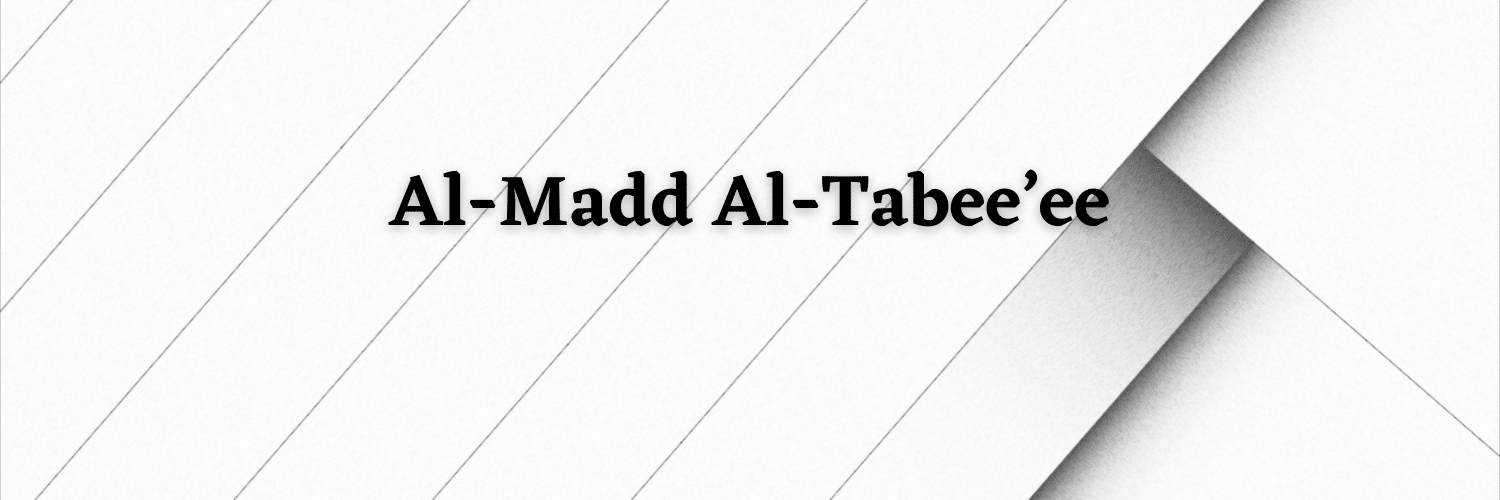In the same way we sometimes wished that our holiday period can be a little longer, your tongue, ears and some letters themselves wish that they’re said for a little longer. ‘Why?’, you may think… Well, how obscure to the ear is it to hear someone say a dammah instead of a waaw? And how hard is it for them to continue the ayah without stumbling (after not prolonging)? … Let’s start by looking at this first prolongation…
Al-Madd Al-tabee‘ee: normal/natural prolongation is the act of prolonging or “stretching” the sound of the three madd letters:
ي و أ
alif waaw yaa
for two counts, i.e. the time it takes to say (one-two).
The rule has the following conditions:
The huroof al-madd must all be silent, i.e. have no diacritic on them.
A fat-ha must be present on the letter before a silent alif
A dammah must be present on the letter before a silent waaw
A kasrah must be present on the letter before a silent yaa.
Examples of this are as follow:
![]()
![]() ____
____ ____
____
___qaala qeela yaqoolu
These examples can be combined into one word to help you remember the rule. The word is
نُوحِيهَا
nooheehaa
I really want to stress the fact that in the Quran you will not see a diacritic on these three letters if they are in the state of madd.
It will be an alif, waaw, or yaa with no fat-ha, dammah, kasra, or sukoon ontop/underneath. When I say that these letters must be silent, I am not saying they have sukoon. In fact, if you see a sukoon on an alif or waaw or yaa it means that you are not to stretch this letter whatsoever.
An example of sukoon present on these letters is as follows:

Mala-ihi
NOT: Mala-eehi

Aaminoo
NOT: Aaminooaa

Ulaa-ika
NOT: Uoolaa-ika
A final thing to be wary of is something called “‘ella” letters. This is when the three madd letters have no diacrtic on them, but are not prolonged because the letter preceeding them does not have the corresponding diacritic mentioned in the above conditions. This will be further discussed in a later post, insha Allah.
Resources Link:
-Sukoon [Gatway To Arabic: page 48]
-Makhaarij Al-Huroof [dot points 5, 7, 12, 15]
-Short and long vowels [Gatway To Arabic: pages 21-23; and 44-47]
-Tajweed Rule [Gatway To Arabic: page 4-6 and first half of page 7]
Note, these documents are found on the resources page.




